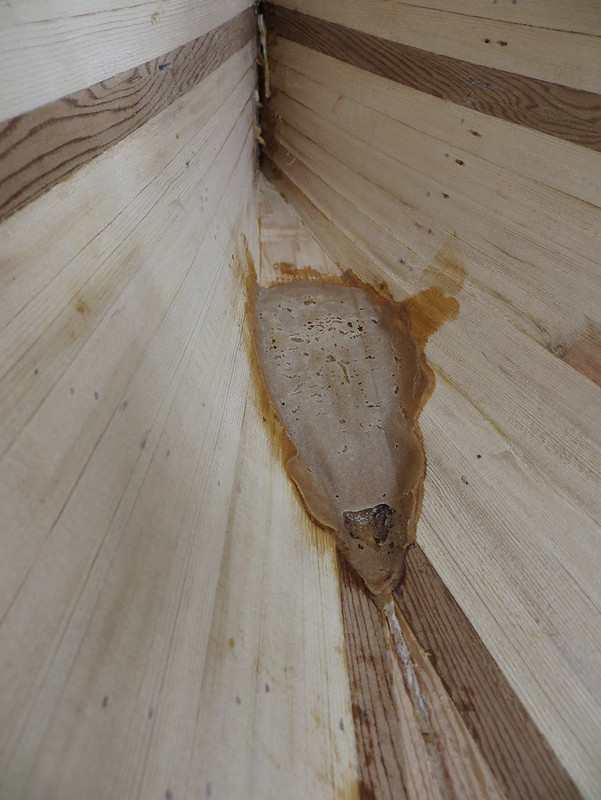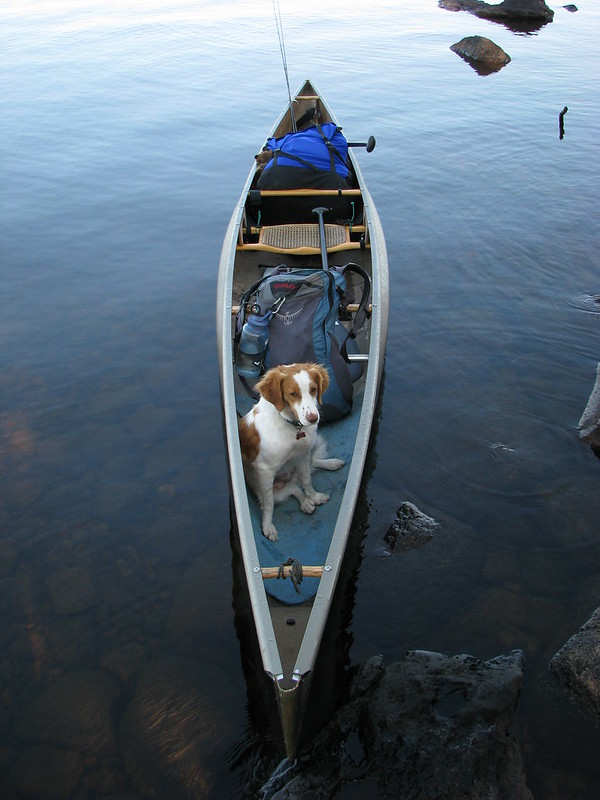When home for lunch I sanded down the fiberglass stem patches I put down last night. Now it's all ready to be glassed:

20140723_001 by Alan Gage, on Flickr
Got home from work and went right to work. Draped the cloth over the hull, trimmed the excess, and slipped a few more pieces under the main cloth for stem reinforcement:

20140723_003 by Alan Gage, on Flickr
I don't know if everyone does their stems this way or not:

20140723_004 by Alan Gage, on Flickr
The cloth is slit up the center line to where it starts to curve. First one flap wraps around the stem and then the other wraps over the first, which gives you two layers on the stem ends.
About 1 1/2 hours later it looked like this:

20140723_007 by Alan Gage, on Flickr

20140723_008 by Alan Gage, on Flickr

20140723_009 by Alan Gage, on Flickr
I used one of those little plastic hand squeegees for most of it and a foam roller where it turned vertical and under the tumblehome area. It went pretty smoothly. This was my first time working with 4oz cloth and it looks like I went a little heavier than I should have with the resin. I was trying to avoid starving the cloth but it looks like there are some spots that have completely filled the weave. I couldn't quite get the cloth to lay right at the stems at the top of the slit mentioned above without leaving a very small bare spot with no cloth. So I just let it be that way and cut a small patch to put over the area. Blended right in and laid fine. Will be invisible when done.
I used Raka's "slow" hardener (not the non-blushing) and I quickly learned to mix smaller batches. Mixing 10oz. batches was no problem when working on the center of the hull with lots of flat real estate where I could pour and spread liberally. But as I got closer to the stems with more vertical surfaces that needed to be rolled on things slowed down and suddenly I realized my pot was starting to kick. After that I did 6oz. batches without trouble.
Tonight before bed I'll go back out and roll on a second coat to fill the weave. I'm hoping with the 4oz cloth that will be the last one needed.
Alan

20140723_001 by Alan Gage, on Flickr
Got home from work and went right to work. Draped the cloth over the hull, trimmed the excess, and slipped a few more pieces under the main cloth for stem reinforcement:

20140723_003 by Alan Gage, on Flickr
I don't know if everyone does their stems this way or not:

20140723_004 by Alan Gage, on Flickr
The cloth is slit up the center line to where it starts to curve. First one flap wraps around the stem and then the other wraps over the first, which gives you two layers on the stem ends.
About 1 1/2 hours later it looked like this:

20140723_007 by Alan Gage, on Flickr

20140723_008 by Alan Gage, on Flickr

20140723_009 by Alan Gage, on Flickr
I used one of those little plastic hand squeegees for most of it and a foam roller where it turned vertical and under the tumblehome area. It went pretty smoothly. This was my first time working with 4oz cloth and it looks like I went a little heavier than I should have with the resin. I was trying to avoid starving the cloth but it looks like there are some spots that have completely filled the weave. I couldn't quite get the cloth to lay right at the stems at the top of the slit mentioned above without leaving a very small bare spot with no cloth. So I just let it be that way and cut a small patch to put over the area. Blended right in and laid fine. Will be invisible when done.
I used Raka's "slow" hardener (not the non-blushing) and I quickly learned to mix smaller batches. Mixing 10oz. batches was no problem when working on the center of the hull with lots of flat real estate where I could pour and spread liberally. But as I got closer to the stems with more vertical surfaces that needed to be rolled on things slowed down and suddenly I realized my pot was starting to kick. After that I did 6oz. batches without trouble.
Tonight before bed I'll go back out and roll on a second coat to fill the weave. I'm hoping with the 4oz cloth that will be the last one needed.
Alan



























